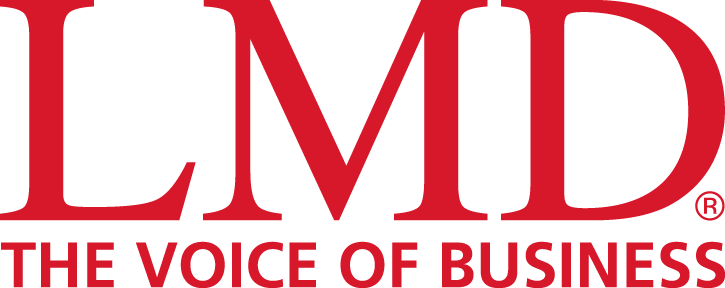BRAND FINANCE RANKS BANK OF CEYLON AS SRI LANKA’S MOST VALUABLE BRAND IN 2025
Bank of Ceylon’s Brand Strength Rests on Trust, Resilience, and Relevance
- In conversation with Chief Marketing Officer Sameera Liyanage
When Brand Finance Lanka announced its rankings for 2025, Bank of Ceylon (BOC) returned to the top as Sri Lanka’s Most Valuable Brand. The title carries significance beyond prestige. It showcases how an institution is perceived, how it manages its responsibilities, and how its identity connects with both customers and the wider public.

Brand Finance follows internationally recognized valuation methods. Its assessments do not stop at balance sheets. They weigh customer sentiment, marketing strength, governance standards, sustainability commitments, digital engagement, and internal equity. They also capture public perception through surveys that include both customers and non-customers. This wider lens means that a brand is valued not simply for the profits it makes but for how it lives in the minds of people and how it performs across disciplines.
For BOC, the recognition is a return to a position it held consistently for a decade between 2009 and 2019. More importantly, it comes after a six-year gap during which the country faced crises ranging from the Easter Sunday attacks and the COVID-19 pandemic to currency shortages and political turbulence. Throughout these years, BOC remained central to the country’s economic stability, ensuring the import of essential goods, maintaining financial flows, and providing continuity when the system came under strain.
To understand the weight of this recognition and the thinking behind BOC’s brand journey, we spoke with Chief Marketing Officer Sameera Liyanage.
What does Brand Finance’s recognition of Bank of Ceylon as Sri Lanka’s Most Valuable Brand mean from a marketing and brand equity perspective?
Sameera Liyanage:
This recognition confirms the trust and confidence placed in the Bank of Ceylon by the people of Sri Lanka. In banking, trust is the most critical element because customers hand over their savings and expect responsibility and reliability in return. Being named the Most Valuable Brand shows that people continue to see BOC as a safe and dependable institution.
It also matters that Brand Finance applies a global standard when making this evaluation. They follow internationally accepted methodologies and give weight to both financial and non-financial factors. This sends a strong signal not only to Sri Lankans but also to international stakeholders who may be considering long-term engagement with us.
We held the top spot for ten years, from 2009 until 2019. Regaining it in 2025 after six years demonstrates resilience and relevance. It is not only a reflection of financial strength but also of the brand’s ability to adapt, communicate, and stay aligned with public expectations.
From a marketing point of view, this recognition validates the work we have done across several areas: digital transformation, customer service, sustainability, and communications. It shows that the BOC brand is deeply rooted in the public imagination and continues to stand for reliability, inclusivity, and progress.
Brand Finance uses a global methodology. How does that shape your understanding of brand building?
The Brand Finance approach makes it clear that branding cannot be separated from finance. Their model measures brand strength and then assigns it financial value. That bridges what many people see as two separate functions. For us, it proves that marketing creates tangible value when it is executed well and consistently.
The methodology is multidisciplinary. It evaluates governance, sustainability, human resources, digital engagement, and customer service. It looks at what customers say, but it also looks at what non-customers think. The fact that people who have never banked with us still rate the BOC brand highly tells us that our visibility and reputation reach beyond our immediate client base. That level of awareness is crucial.
This global perspective forces us to think holistically. A strong brand cannot exist without sound financial management. Equally, strong financial results do not guarantee brand strength without responsible governance, customer loyalty, and credibility. For me, that balance is what makes this recognition meaningful.
How has BOC’s marketing strategy evolved in recent years to stay relevant in a fast-changing environment?
We have moved away from product-driven campaigns toward a more customer-focused and purpose-driven strategy. Our communications emphasize aspirations rather than transactions. For example, a savings product campaign is framed around supporting a child’s future, not only about interest rates. An SME loan campaign is framed around creating livelihoods and empowering entrepreneurs.
Digital transformation has been central to this evolution. We now rely on data analytics and customer insights to design campaigns that are targeted and relevant. We expanded our presence across social media platforms and use them for real-time engagement. This is essential for staying connected to younger audiences and responding quickly to their expectations.
At the same time, our actions during national crises shaped our brand identity. When the pandemic disrupted supply chains, we facilitated payments for essential medical imports. When the country faced severe foreign currency shortages, we ensured payments for fuel, gas, and electricity were processed.
These interventions were not promotional exercises. They were responsibilities we had to fulfill. Yet they also defined the BOC brand as a partner that supports national stability. This mix of purpose, digital relevance, and national responsibility has helped us remain authentic.
In a competitive market, what differentiates the BOC brand from other financial institutions in terms of marketing?
Our differentiation rests on three pillars: trust, scale, and purpose.
Trust comes from our history, our consistency, and the way we manage responsibilities. Scale comes from our nationwide network of over 660 branches, supported by a strong digital infrastructure and our partnership with Sri Lanka Post through the Agent Banking model. Purpose comes from the way we design products and campaigns with wider social and national impact.
The BOC Youth Loan is a good example. It supports entrepreneurs under the age of 30 who may not have property or assets to pledge as collateral. Instead, we evaluate their business plan and ambition. This has already empowered more than 19,000 young people to start ventures. That is not only a financial product but also a statement about inclusion.
We have also integrated innovation into areas such as agriculture. Through our support for advanced drone technology, we are helping to modernise farming practices in Sri Lanka. By partnering to fund training programs for drone pilots and backing research on precision agriculture, BOC is enabling farmers to use drones for optimizing the use of water and fertilizer, and improving yields.
This initiative promotes sustainable, data-driven agriculture while ensuring Sri Lanka’s farming sector remains globally competitive. It shows how banking can drive modernization in traditional industries, creating tangible development impact and reinforcing our role in national progress.
Our workforce also strengthens our differentiation. A large proportion of our 8,000 employees are under 35 years old. They bring energy, relatability, and digital fluency. They interact with customers as authentic representatives of our values, both in physical branches and on digital platforms.
How do you balance the bank’s legacy with the need to appeal to a younger, tech-savvy generation?
Legacy provides stability, while digital transformation provides relevance. We work to keep both in balance.
The BOC Flex App has been a major step toward appealing to younger audiences. It combines payments and banking in a single platform with an intuitive interface. It reflects the expectations of a generation that wants services available on their phones at any time.
We also support youth in education and employment. Each year we provide scholarships worth nearly Rs. 30 million to university entrants. These scholarships continue until graduation. We run career guidance programs nationwide and our Dream Builders initiative with universities helps students bridge the gap between study and employment. These are not only social initiatives. They reinforce our brand as one that invests in future generations.
On the communications side, we maintain active engagement on platforms popular with youth, including TikTok, Instagram and WhatsApp. This allows us to reach them directly and build two-way interaction.
How do you align brand building with financial objectives, especially with brand valuation gaining importance?
We treat the brand as a financial asset. This means marketing and finance work in close coordination. Campaigns are not only evaluated by their reach or visibility but also by their contribution to loyalty, reputation, and long-term value.
The Brand Finance model makes this alignment clearer. It shows that employee engagement, governance, and sustainability all influence financial value through the brand. This allows finance and marketing to share common ground.
At BOC, the leadership recognizes that marketing creates measurable value when aligned with institutional goals. This approach keeps us disciplined and ensures that every campaign contributes to both perception and performance.
How do governance, sustainability, and internal equity shape the BOC brand?
They are essential. Strong governance provides credibility. Without it, no brand can maintain trust. Sustainability reflects our responsibility to the environment, to communities, and to the economy. Equity within the workforce builds a culture of fairness and representation.
These are not abstract ideas. They influence how people perceive us. Brand Finance takes them into account because they directly affect reputation. If customers see poor governance, brand value declines. If the public observes weak commitment to sustainability or inequity in the workplace, credibility erodes.
We integrate these factors into our strategy. That is why our brand remains visible not only to customers but also to non-customers who still view us positively. High awareness and trust across the public sphere confirm that our brand presence goes beyond transactional relationships.
Looking ahead, what is your vision for the BOC brand over the next 3–5 years?
Our vision is to remain Sri Lanka’s most trusted financial partner while also building a stronger regional presence. We will continue to expand digital engagement, personalize services through AI, and reinforce our role in community development.
Internationally, we are strengthening cross-border partnerships and positioning ourselves as a credible South Asian institution. Our repeated ranking among the Top 1000 Banks in the World by The Banker and international awards for our Islamic Banking services confirm that our brand has weight beyond local boundaries.
At the same time, our foundation will remain the same: being present in the daily lives of Sri Lankans. From a child’s first savings account to an entrepreneur’s first business loan or a farmer’s adoption of modern tools, BOC must continue to stand as a dependable partner. That is the essence of our brand, and it will guide our path in the years ahead.





